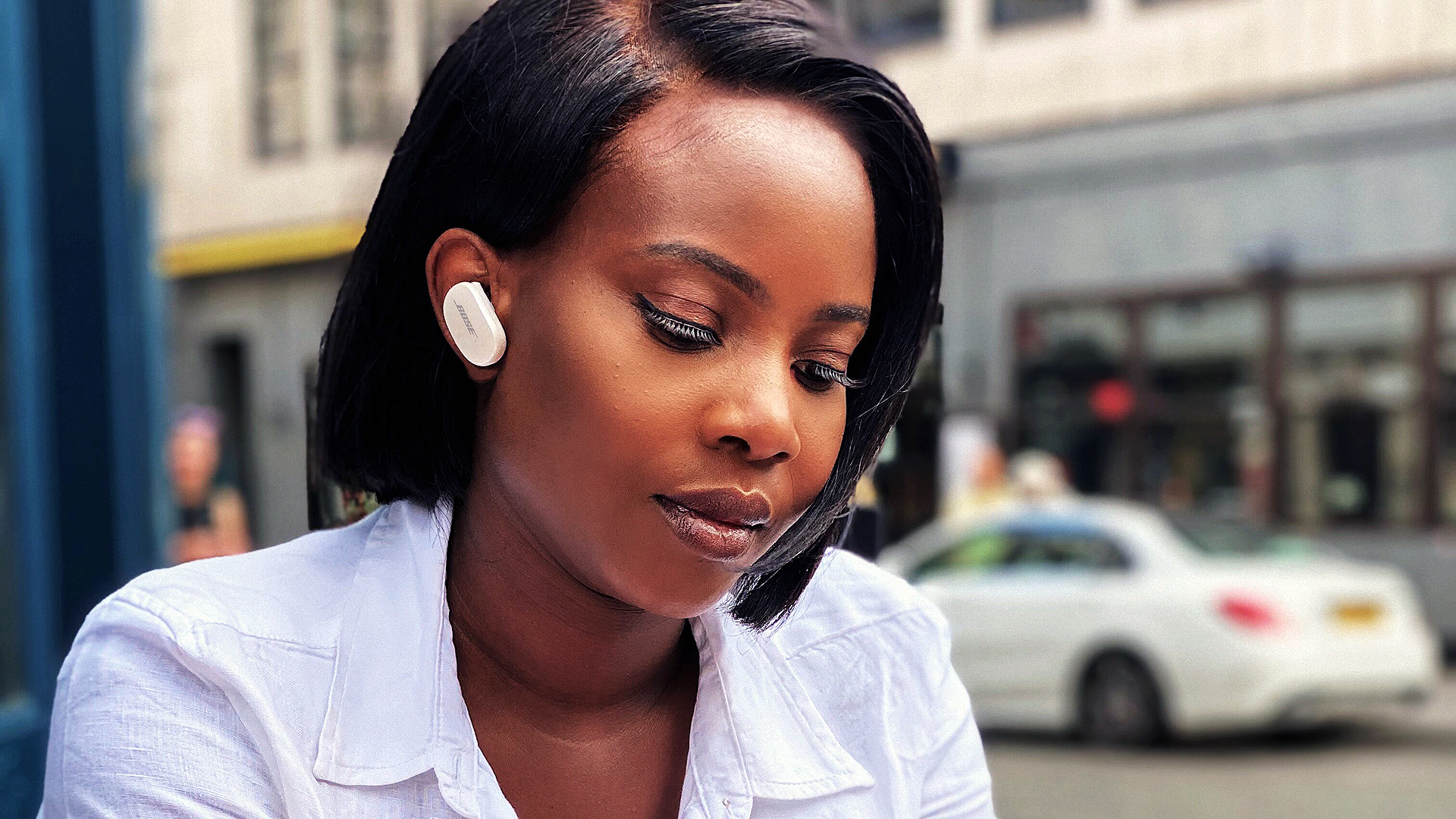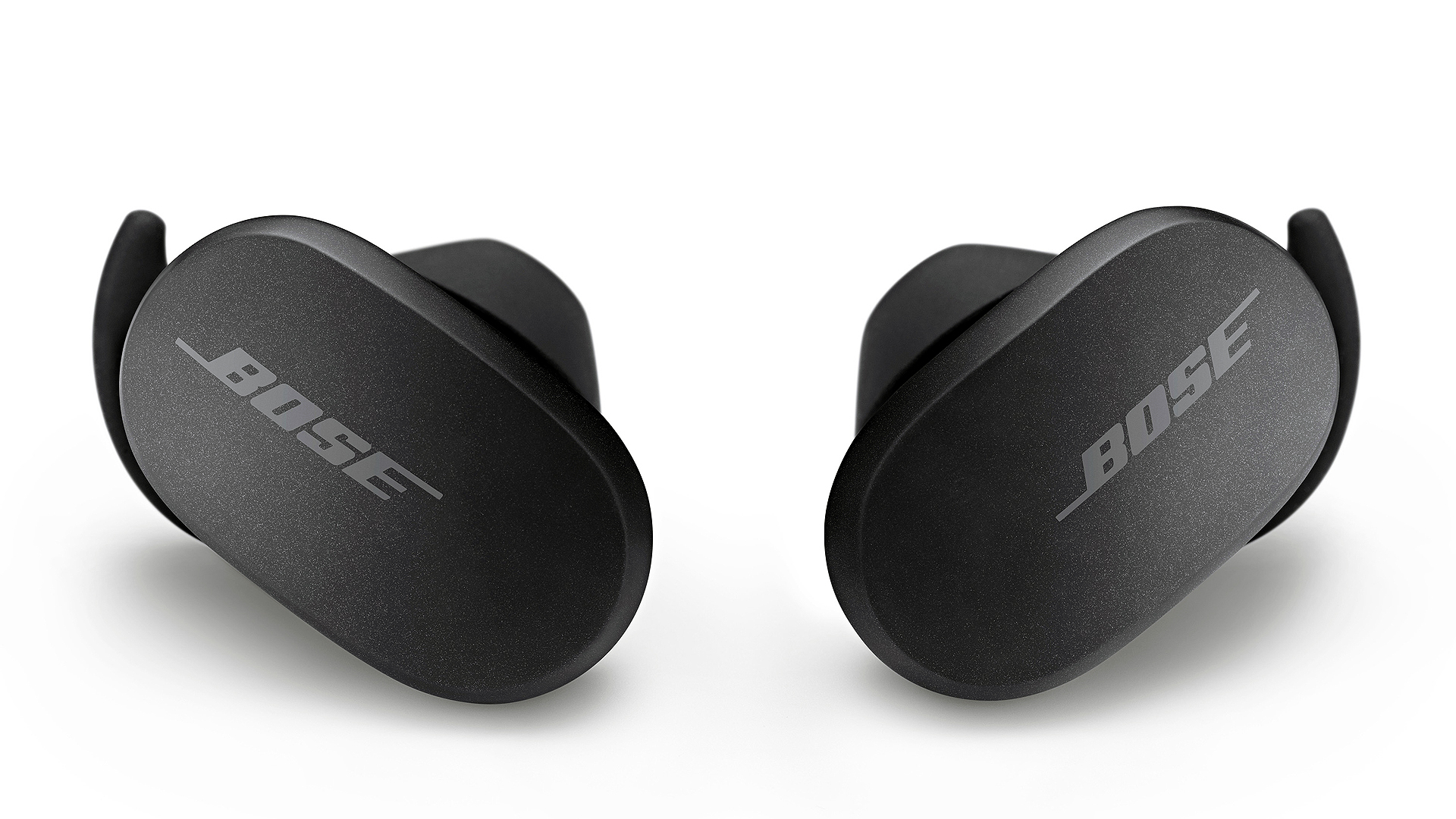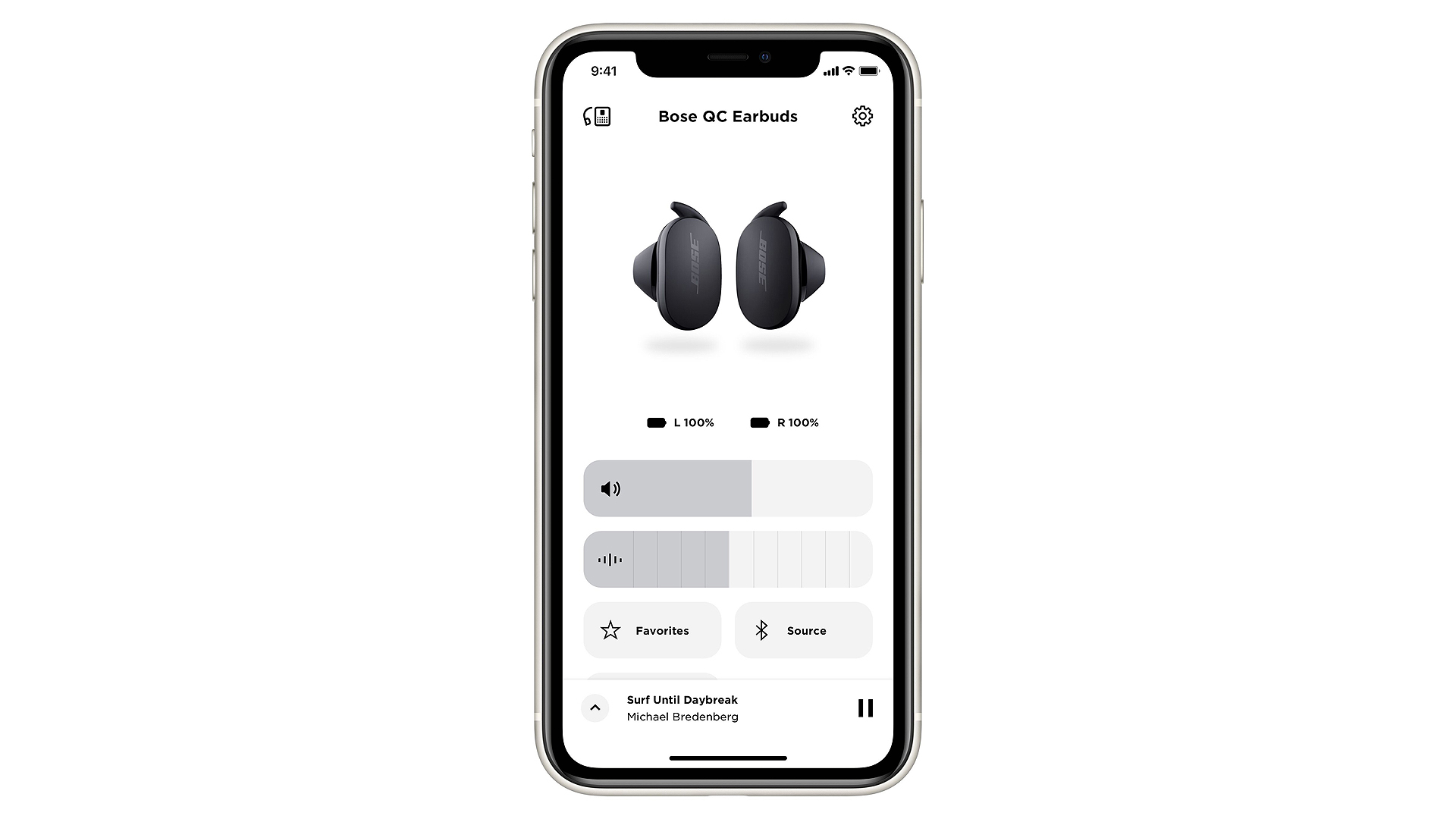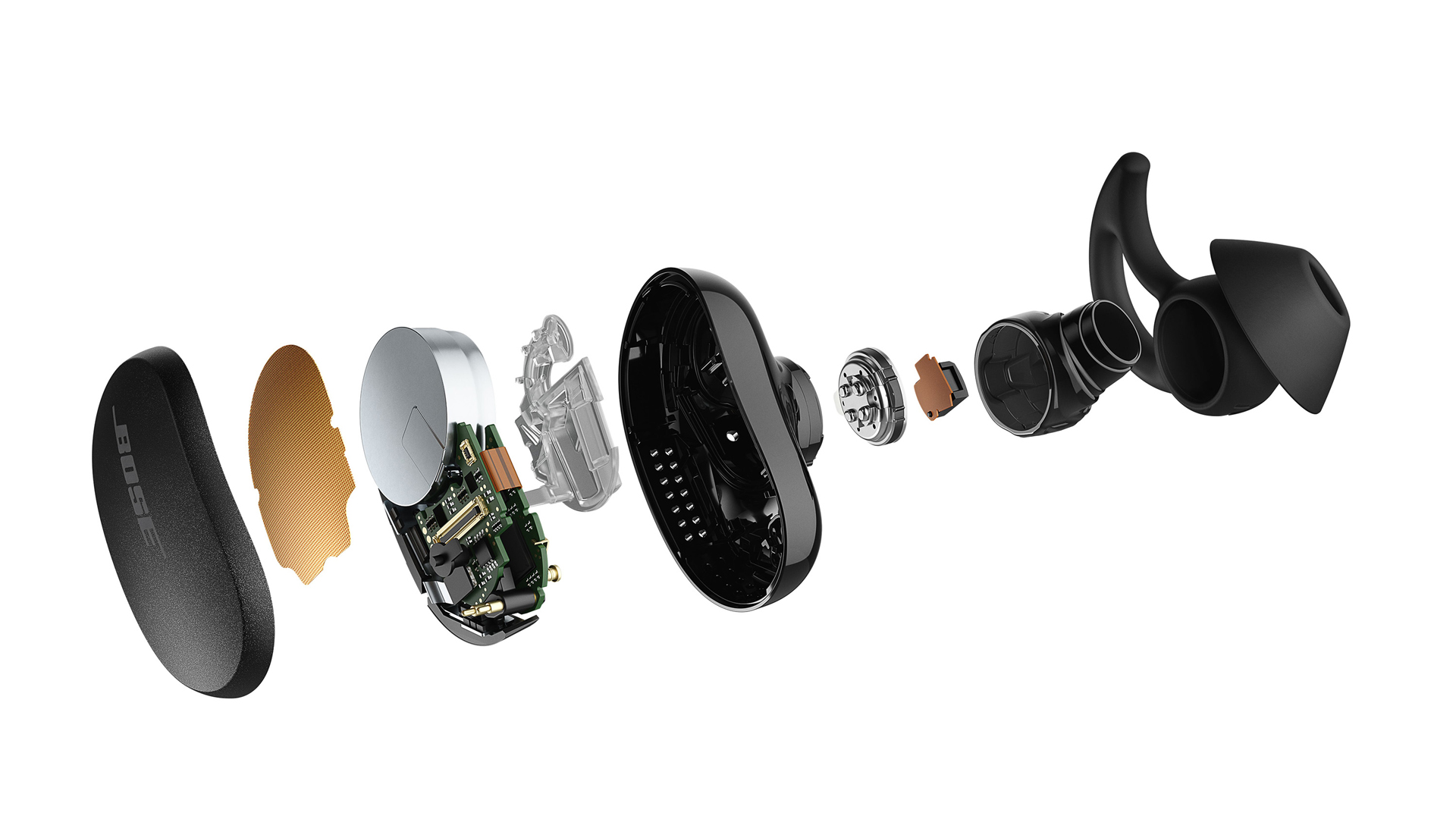Bose QuietComfort Earbuds review: among the best true wireless you can buy
A little on the bulbous side but the sound and slick controls more than make up for it



As a combination of sound quality, comfort and particularly noise-cancellation, Bose QuietComfort Earbuds are some of the best in the business. They do protrude more than a lot of other true wireless buds but they fit well and sound great.
-
+
Exceptional noise-cancellation
-
+
Comfortable, secure fit
-
+
Muscular-yet-deft sound
-
-
Average battery life
-
-
Big buds, bigger case
Why you can trust T3

The Bose QuietComfort Earbuds review in a sentence: for anyone who was previously in doubt, these prove for once and for all that Bose knows its stuff when it comes to true wireless earbuds with active noise cancellation.
Since their release back in September 2020, these have managed to maintain their place as some of the best true wireless earbuds around, and they're undoubtedly some of the best noise-cancelling earbuds as well.
Granted they don't come without any faults, you might have an issue with their size and the battery life could be improved but even so, it'd be hard not to rate these buds very highly – they're the best Bose headphones from the company's current range, in my opinion, and definitely its best in-ear model.
Bose QuietComfort Earbuds: price and availability
The Bose QuietComfort Earbuds are on sale now, and in the UK they’re priced at £249. Make sure you check our Bose discount codes to snap up a saving. In the United States, where Bose’s watertight deal with the NFL presumably means every coach and player will be obliged to wear them at all times, they’re pitched at $279. In Australia, meanwhile, they’ll set you back AU$399.
Bose QuietComfort Earbuds: build quality, design and battery life

Here’s a question to start with: where do you stand on the subject of ‘discretion’? If you’re all for it, perhaps the Bose QuietComfort Earbuds aren’t the true wireless in-ears for you. The design guarantees no one will ever be in any doubt as to whether you’re wearing them or not.
That relatively big, lozenge-shaped housing is fitted with an elaborate silicone eartip that incorporates a ‘nozzle’ to direct sound into the ear and a ‘wing’ to position the earbud securely. The result is a remarkably secure fit that’s not unlike some of the more successful ‘sports buds’ designs on the market. As the Bose are supplied with a choice of ‘S’, ‘M’ or ‘L’ eartips, it’s simple to get a snug, comfortable fit that will stay snug and comfortable for hours on end. It’s a thoughtful and effective design, one that offers a fair degree of passive noise-cancellation and serves to minimise the unpromising 8.5g weight of each earbud at the same time.
In terms of build quality, there’s absolutely nothing to take issue with here - which is no surprise where Bose is concerned. Everything is screwed or glued together with precision - the tolerances where the front of the earbud housing joins the rear are infinitesimal, and the fit is basically perfect. Even the perforations in each earbud for the mics that monitor ambient sound or relay your voice to a caller or to your voice assistant are neat and tidy.
Get all the latest news, reviews, deals and buying guides on gorgeous tech, home and active products from the T3 experts

The user interface is a rather more qualified success. The touch controls on either earbud are responsive - but they’re altogether too restricted in their functionality. Being able to cycle through three user-designated levels of noise-cancellation is handy, ‘play/pause’ is useful, and ‘summon voice assistant’ is also worthwhile. ‘Answer/end/reject call’ is never a bad control to have, either. But that’s very nearly it - there’s no facility to adjust the volume (except by asking your voice assistant to do it), for example. And while the Bose Music app allows the user to designate one custom touch-control, the choice is between ‘hear battery level’ and ‘skip forwards’. Obviously anyone with any sense will select ‘skip forwards’ - but there remains no facility to ‘skip backwards’.
The clean, stable control app is quite useful - at least as far as it goes. On the plus side, this is where you get to specify your three levels of noise-cancelling that can be cycled through using touch-control. It’s here, too, that you can decide if you’d like music to automatically pause when you remove one earbud, to automatically answer phonecalls as they come in, or adjust how much of your own voice you’d like to hear when you’re engaged in a conversation. But there’s no EQ adjustment - which one might have thought was every bit as useful, if not more so, than the functions the app actually does have.
So while QuietComfort Earbuds have many very positive elements, it’s safe to say battery life isn’t among them. Despite the charging case and the earbuds themselves being among the larger examples of their type (each earbud is 39 x 26 x 27mm, while the case is a positively corpulent 89 x 51 x 32mm), there’s six hours in the earbuds themselves and another two charges in the case.
That’s an all-in, best-case-scenario time of 18 hours, which is underwhelming for true wireless in 2021. We could list all the true wireless in-ear alternatives that cost less than this yet carry a lot more power, but it’s a long list and we don’t really have time.
A 15-minute charge will deliver another two hours of play-time, mind you, which isn’t too bad. And the case will go from ‘flat’ to ‘full’ in three hours, using either the bundled USB-C cable or any Qi-certified charging mat.
Bose QuietComfort Earbuds: sound quality

Bose QuietComfort Earbuds sound great. Yes, these are among the more expensive true wireless earbuds on the market just now, but a quick listen proves that they are not in any way overpriced.
Before we pile into the way they reproduce music, though, it’s worth taking a moment to admire the active noise-cancellation that’s on board here. It’s deeply impressive – use the app to ramp it all the way up to ‘10’ and very, very little external noise is allowed in. And the Bose manage to negate the outside world without in any way introducing that vague ‘cabin pressure’ sensation in the wearer’s inner ear like some less accomplished designs do. If the ability to isolate yourself from the sound of what’s going on around you is high on your list of priorities, the QuietComfort Earbuds should be high on your list of possibilities.
As far as sound quality goes, well, if you’re familiar with any of the headphones this brand has released in the last half-a-dozen years or so, nothing about the sonic signature delivered by the QuietComfort Earbuds is going to come as much of a surprise.
Treat the Bose to some properly full-fat high-resolution audio files (the Earbuds pair to your music player using Bluetooth 5.1, so that subscription to a top-tier streaming service won’t have been in vain) and the results are punchily impressive. The Bose push the lower frequencies forward a little in the name of excitement, that’s for sure, but bass remains controlled, straight-edged and rapid nevertheless. There’s none of the low-end slurring less capable earbuds indulge in, and despite this bass-happy confidence the low frequencies steer well clear of intruding on the midrange. This plentiful low-end presence comes complete with plenty of detail and texture, too, so if you’re bass-inclined there doesn’t seem to be much downside to this emphasis.
Happily unmolested by low frequencies, then, the midrange is left alone to serve up a stack of detail of its own. Singers sound natural, immediate and characterful, and instruments in this part of the frequency range are packed with detail of texture and timbre too.
At the top end there’s just enough bite and shine to prevent the QuietComfort Earbuds sounding dull, and there’s sufficient substance to the treble to stop it sounding splashy or insubstantial. The entire frequency range is integrated smoothly, and the Bose establish a deep, wide soundstage for recordings to stretch out on.
Happily, the QuietComfort Earbuds don’t throw in the towel when asked to deal with some less information-rich digital files either. A standard Spotify stream retains almost everything that’s good about the audio reproduction, a slight - but inevitable - drop-off in detail levels and low-frequency extension notwithstanding. They’re still a likeable, wide-screen listen and are still prepared to dig in and motor along with pretty much the same level of poise and control.
They’re not absolutely the most dynamic listen, it’s true - the Bose aren’t quite barrel-chested enough to fully describe the peaks and troughs of, say, a full-on orchestral piece. That’s not to say they’re incapable of describing dynamics both great and small - it’s just that a rival like Sennheiser’s Momentum True Wireless 2 make a slightly better fist of it. And they’re no fans of maximum volume, either - a little of the composure, not to mention the delineation of the soundstage, goes astray if you decide to really give them the beans.
These are minor drawbacks, though, and nine times out of 10 they won’t impact on your enjoyment of the Bose QuietComfort Earbuds in the slightest. And there really is plenty to enjoy.
Bose QuietComfort Earbuds: verdict

Thanks to the exceptional noise-cancelling, the QuietComfort Earbuds really do deliver proper quiet. Thanks to their clever fit, they’re comfortable as well. And the ‘Bose’ and ‘Earbuds’ bits are covered off too. So unless you want a truly neutral audio balance, or you insist on playing at maximum volume the entire time, or you think volume control should be available simply by touching the earbuds themselves, you need to make sure you give these Bose full consideration.
Simon Lucas is a freelance technology journalist and consultant, with particular emphasis on the audio/video aspects of home entertainment. Before embracing the carefree life of the freelancer, he was editor of What Hi-Fi? magazine and website – since then, he's written for titles such as Wired, Metro, the Guardian and Stuff, among many others. Should he find himself with a spare moment, Simon likes nothing more than publishing and then quickly deleting tweets about the state of the nation (in general), the state of Aston Villa (in particular) and the state of his partner's cat.
